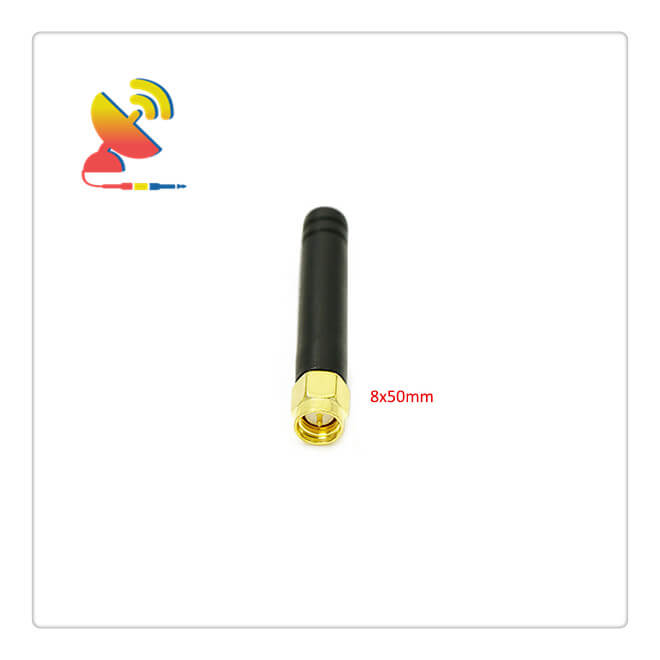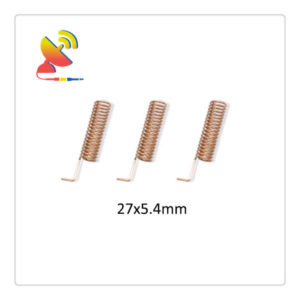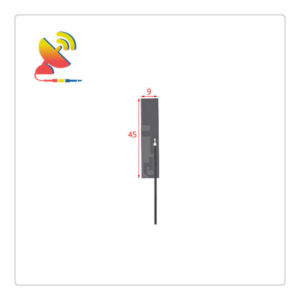Description
What is an 868 915Mhz Wireless Module Receiving And Transmitting Antenna?
The 868 915Mhz Wireless Module Receiving And Transmitting Antenna CTRF-ANTENNA-AP-8296-0850-SMA model is an 824-960MHz GSM Wireless Module Receiving And Transmitting Antenna with a standard SMA male connector antenna, and an 8x50mm compact size rubber duck antenna manufactured by C&T RF Antennas Inc.
The 868 915Mhz Lora antenna Module Receiving And Transmitting Antenna is for GSM, Lora, and LoraWan applications available at C&T RF Antennas Inc. The Wireless Module Receiving And Transmitting Antenna manufacturer in China.
C&T RF Antennas Inc provides internal & external antennas with the antenna radio frequencies such as NFC, 169MHz, 230MHz, 315MHz, 433MHz, 868MHz, 915MHz, VHF&UHF, Lora, NB-IoT, ADS-B, GSM, GNSS, Wifi 2.4GHz, 5.8GHz, Cellular 2G 3G 4G LTE, GPS, 5G NR, etc.
C&T RF Antennas Inc. provides RF antennae with Omni & Directional antenna types such as Dipole Antennas, Whip Antennas, Marine Antennas, Router Antennas, MIMO Antennas, Combo Antennas, PCB Antennas, FPC Antennas, Spring Antennas, Magnetic Antennas, Sector Antennas, Yagi Antennas, and Accessories, etc, for IoT & M2M industries.
Contact us for more details on the Module Receiving And Transmitting Antenna such as Module Receiving And Transmitting Antenna datasheet, Module Receiving And Transmitting Antenna pricing, and Module Receiving And Transmitting Antenna inventory.
Or other Module Receiving And Transmitting Antenna styles.
868 915Mhz Wireless Module Receiving And Transmitting Antenna Specifications
| 868 915Mhz Wireless Module Receiving And Transmitting Antenna Electrical Specifications | |
| RF Antenna Type | Omni Rubber Duck Antenna |
| Model | CTRF-ANTENNA-AP-8296-0850-SMA |
| Frequency Range | 824-960MHz |
| Gain | 2dBi |
| VSWR | ≤2.0 |
| Impedance | 50 Ω |
| Polarization | Linear |
| Directional | Omnidirectional |
| Connector | SMA Male |
| Max Power | 50W |
| Lightning Protection | DC-Ground |
| 868 915Mhz Wireless Module Receiving And Transmitting Antenna Mechanical Specifications | |
| Dimension | 8*50mm |
| Weight | Approx. 10g |
| Radome Material | Plastic ABS |
| Operation Temperature | -20˚C ~ +85˚C |
| Storage Temperature | -40˚C ~ +80˚C |
| Color | Black |
| Antenna Design | Dipole Array |
| Mounting | SMA Connector |
| SafetyEmission and other | RoHS Compliant |
| Applications | Public Safety/LMR/P25/TETRA, ISM/SCADA/Utilities, RFID, IoT/NB-IoT/LoRa, etc. |
Module
The transmitter module is a remote control device that uses radio signals to control various remote institutions.
After these signals are received by the remote receiving device, they can instruct or drive various other corresponding mechanical or electronic devices to complete various operations such as closing the circuit, moving the handle, and turning on the motor, and then these machines can perform the required operations.
As a kind of remote control supplemented with infrared remote control, it has been widely used in the field of garage doors, electric doors, barrier gate remote controls, anti-theft alarms, industrial controls, and wireless smart homes.
There are three types of coding methods commonly used in transmitting modules, namely fixed code, learning code, and rolling code. Rolling code is an upgraded product of fixed code and learning code. Rolling coding is used where confidentiality is required.
The rolling code encoding method has the following advantages:
1. Strong confidentiality, the code is automatically changed after each launch, and others cannot use the “code detector” to obtain the address code;
2. The number of address codes is greater than 100,000 groups, and the probability of “duplicate codes” in use is extremely small;
3. The code is easy to match. The rolling code has the function of learning and storing. It does not need to use a soldering iron. The code can be matched at the user’s site, and a receiver can learn up to 14 different transmitters, which has a high degree of flexibility in use;
4. The error code is small. Due to the advantages of coding, the error action of the receiver when it does not receive the local code is almost zero.
The coding capacity of the fixed code is only 6561, and the probability of repeated codes is extremely high.
The code value can be seen through the solder joint connection method or obtained by the code detector at the use site, so it does not have confidentiality and is mainly used In occasions with low confidentiality requirements, it has also been widely used because of its low price.
Factors affecting launch distance
The main factors affecting the remote control distance of the transmitter module are as follows:
1. Transmitting power
The larger the transmitting power, the longer the distance, but the power consumption is large, and it is easy to cause interference;
2. Receiving sensitivity
The receiver’s receiving sensitivity is improved, and the remote control distance is increased, but it is easy to interfere and cause malfunction or loss of control;
3. Antenna
Linear antennas are used, and they are parallel to each other, and the remote control distance is long, but it occupies a large space. Stretching and straightening the antenna can increase the remote control distance during use;
4. Height
The higher the antenna, the longer the remote control distance, but subject to objective conditions;
5. Blocking
The currently used wireless remote control uses the UHF frequency band specified by the country. Its propagation characteristics are similar to that of light.
It spreads in a straight line and has small diffraction. If there is a wall between the transmitter and the receiver, the remote control distance will be greatly reduced. Reinforced concrete walls have even more influence due to the absorption of electric waves by the conductor.
Transmitting module antenna
The antenna has a great influence on the receiving effect of the module. It is best to connect a 1/4-wavelength antenna, generally, a 50-ohm single-core wire is used.
The location of the antenna also affects the receiving effect of the module. When installing, the antenna should be as straight as possible, far away from the shield, high voltage, and interference sources.
Application field
The commonly used carrier frequency of the transmitting module is 315mHz or 433mHz. The remote control uses the open frequency band specified by the country.
In this frequency band, the transmitting power is less than 10mW, the coverage is less than 100m or does not exceed the range of the unit. The management committee approves and uses it freely.
Chinese open frequency band is regulated as 315mHz, while European and American countries stipulate it as 433mHz & 868, so products exported to the above-mentioned countries should use 433mHz remote control.
Wireless calling system, anti-theft alarm, wireless data transmission, automatic data acquisition system, automobile tire pressure monitoring, etc.






Reviews
There are no reviews yet.